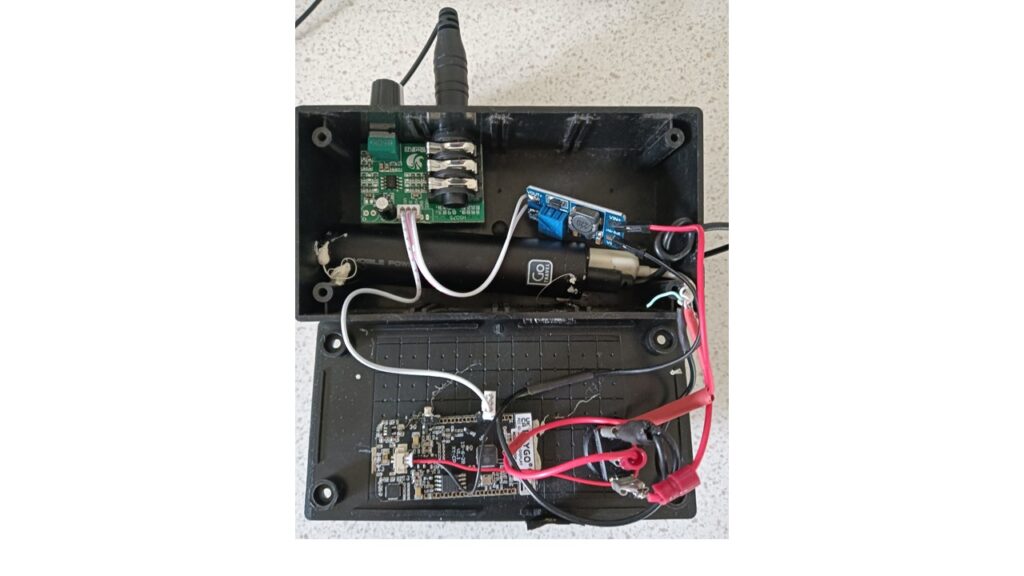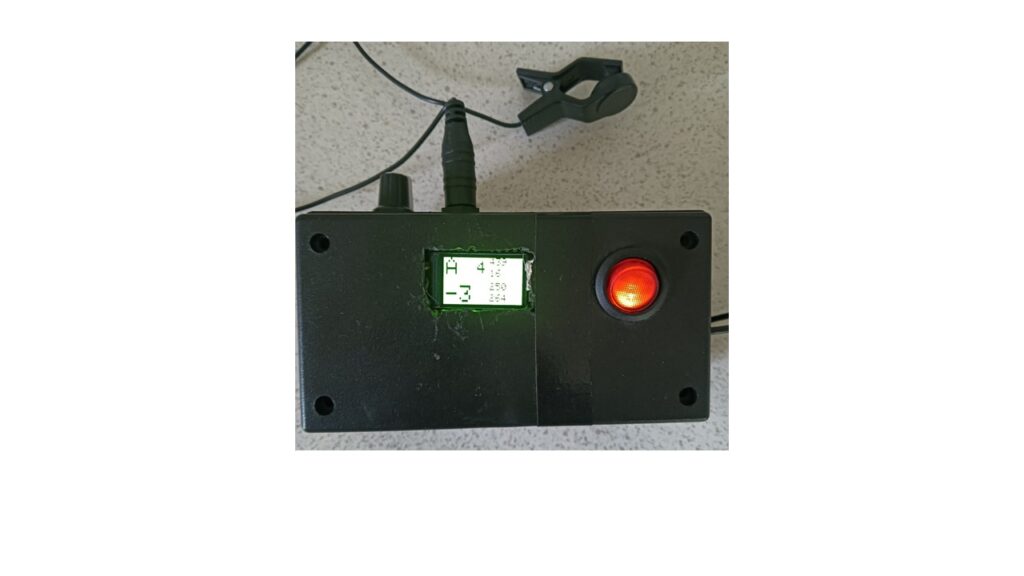Our client is legally blind and plays mandolin in a band. He jokes that stringed instrument players “spend half their time tuning the instrument and the other half playing out of tune”.
His fellow band members tune their instruments with a clip-on tuner. These pick up vibrations on the instrument and display the note and how far out of tune the string is. The pickup means they are immune to surrounding noise (e.g. other instruments). However, our client cannot see the display.
There is an Apple App, “Talking Tuner”, that speaks the note and how far out of tune it is. But it relies on the iPhone microphone and speaker and is impacted by surrounding noise. The App/iPhone does not support simultaneous use of cabled mic input and Bluetooth output and trying to trick that results in an inaudible output level.
Tadvic set about creating a system with a clip-on pick up and speech to a Bluetooth headset.
We combined:
- An ESP32 LilyGo T-Display 16MB microcontroller with
- A TL072 High Impedance Pre-amp with a 5v to 12v step up
- A 5V Li-ion battery pack
- An on-off switch
- Put the above in Jiffy box
- A clip-on cabled pickup (Peterson Pitch Grabber or similar)
- A Bluetooth headset
and built software on the Arduino IDE platform.

Some tuners are specific to the instrument (e.g. the 6 strings of a guitar) while some support several instruments (e.g. guitar, violin, ukelele). We set out to create a chromatic tuner (i.e. covers the entire range of a piano “C”, “C#”, “D”, “D#”, “E”, “F”, “F#”, “G”, “G#”, “A”, “A#”, “B” across 8 octaves).
After months of trying numerous approaches, we have produced a working system, using Fast Fourier Transform software with various enhancements. The range is suitable for guitar, mandolin, ukelele etc, but does not cover the extremities of the piano range. When a string is played, the system speaks to the paired Bluetooth headset, e.g “3 cents below A4”. The result is also displayed for sighted users.

Please contact Tadvic if you want more details including a free copy of the software.
The accuracy is +/- a couple of cents, i.e. about 0.25Hz in the range we are using. It matches the Talking Tuner when the latter is used in a quiet environment. It is suitable for casual musicians, but serious / professional musicians require more accuracy. Expensive clip-on tuners like Boss, D’Addario, Snark generally aim for an accuracy of +/- 1 cent or better. For even greater accuracy, strobe tuners (like the Peterson StroboClip HD) can achieve +/- 0.1 cent accuracy i.e. 1/1000th of a semitone. We could not find a way of interfacing these more accurate devices to speech output.